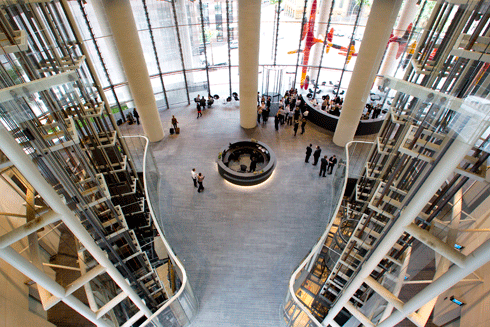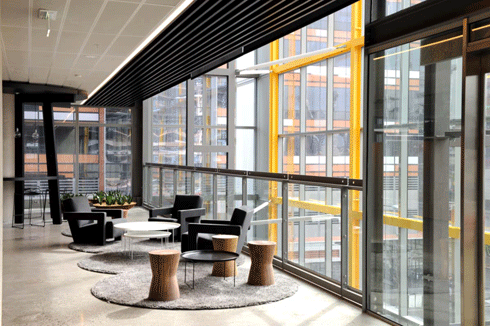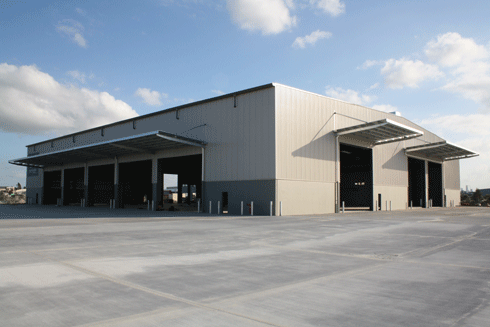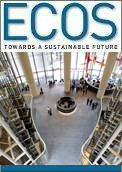
|
Published: 5 March 2012
Top ten predictions for green buildings
Australia’s green building sector has come a long way since the first Green-Star rated building was completed in Canberra in 2004. Ms Romilly Madew, Chief Executive of the Green Building Council of Australia, believes green building is fast becoming the norm. Here, she presents her top ten predictions for our future built environment.
Since 2004, the Green Building Council of Australia (GBCA) has certified more than 4.2 million square metres of space. With 900 member companies, it is one of the world’s largest green building councils.
There are strong indications that the construction industry and the corporate world see green building as an inevitable part of ‘business as usual’ in the immediate future. As is the present case with fire safety standards and disability access, sustainability will soon be taken for granted. According to several recent surveys, it will become ‘just the way we build’:
-
64 per cent of respondents believe that sustainability is a critical business issue (Jones Lang La Salle global corporate occupier survey)
-
more than half of global construction firms expect to be fully committed to green building by 2013 (McGraw Hill Construction report)
-
sustainability was ranked the number one industry opportunity over the next five years, and one of the major risks included failing to adapt to a carbon-constrained future (Davis Langdon 2011 Construction Sentiment survey).
Here are my top ten predictions for the built environment in the years to come.
1. The focus on existing buildings will intensify
In the United States, the fastest-growing rating tool in 2011 was the Leadership in Energy and Environmental Design for Existing Buildings program. Closer to home, some policies – such as the Australian Government’s Commercial Building Disclosure scheme – are already encouraging owners to upgrade their existing buildings. To help the industry green its existing stock, the GBCA is developing the Green Star performance rating tool, which will assess the operational performance of existing buildings against the nine current Green Star categories. We expect this tool to revolutionise the industry.
2. Zero net energy designs will gain traction
There will be little room for buildings that aren’t carbon neutral, or energy, ecology and water positive. Many GBCA members are active in this space. The architecture and design firm Woods Bagot, with engineering consultants Buro Happold, have developed an interactive design platform that tracks the energy and carbon footprints of different building designs. It enables designers to experiment with options and start the design process with the question: ‘what can this building do for the environment?’
3. Building products and materials will become greener
The shift to green materials is being driven by life cycle assessments of materials – that is, the impact of a material from the beginning to the end of its life. An emerging trend will be more emphasis on ‘cradle-to-cradle’ thinking, where materials are purchased based on both their first and second lives. Organisations such as InterfaceFLOR, which is recognised as the world’s most sustainable carpet manufacturer, has implemented a take-back and recycling program to ensure its products have a useful ‘second life’.
4. Affordable green will be the norm
Many people associate green with higher costs – but this is changing. New business models, technologies and high-performance materials are bringing green within reach. Mr Rowan Griffin, Head of Sustainability for the property division at Colonial First, comments that there is no longer a premium for green property.
‘We have already gone to the stage where it’s the norm to be green and energy efficient, so people expect that out of premium buildings,’ he says. ‘So, it’s more a discount of those that are not energy efficient and not green.’
5. Energy sources will transform
We live in a country with more sunny days than anywhere else on the planet. Yet, we are lagging behind Asia, Europe and North America in the installation of solar photovoltaic panels. Expect this to change, as we begin to see solar, wind and photovoltaics routinely integrated into buildings and used as a building material, rather than simply being installed on top. And, many of these renewable energy sources won’t be large. Microturbines are already becoming popular in Asia, and we will see more Australian innovation in this area as we recognise the benefits of integrated small systems over one giant, geographically remote power source.
6. Building information modelling will become standard practice
Expect a more sophisticated approach to building monitoring as building information modelling (BIM) systems become more comprehensive. BIM will enable cross-disciplinary teams to share knowledge and track data of complex building projects. The project team on 1 Bligh Street in Sydney, for example, employed 3D-BIM technology during the design and construction phases. The BIM model brought together more than 30 individual discipline models, and all subconsultants were, in part, appointed on the basis of their BIM capability. The team found that 3D-BIM saved costs and construction time, and supported better building performance and control. Furthermore, the DEXUS property group – a partner in the project – believes BIM can generate efficiencies throughout the life of 1 Bligh Street, as all building data is made available to property managers.
7. Government focus on energy efficiency and overall sustainability will improve
Governments are stepping up their mandates for green buildings, for both their own buildings and the private sector. The desire to reduce carbon emissions by going green will lead more government agencies to require green buildings. New schools and hospitals will be built to the highest environmental standards as community demands and government priorities shift towards sustainability. More than 100 education projects are currently registered to achieve Green Star ratings – and this is only the tip of the iceberg.
8. Investors will demand greater action on climate change
When the GBCA first published The Dollars and Sense of Green Buildings in 2005, little attention was played to the role of investors. Two years later, our revised version tracked an overwhelming change in attitude. Today, the Investor Group on Climate Change warns that investors are monitoring the approach of companies on climate change and carbon pricing, including what they say in the public realm. In fact, 75 per cent of investment fund managers believe organisations need to integrate climate change issues into business strategies and set policy commitments on climate change, while 57 per cent of super funds believe companies need to improve their reporting and disclosure on climate change risks.
9. Blue is the new green
It’s not all about energy. Building designers and managers are taking steps to reduce water consumption through the use of water-saving fixtures, rainwater recovery systems and innovative water technologies. Lot 12 TradeCoast Central, for instance, gained a Green Star innovation point for its shared, precinct-wide nonpotable water storage and distribution system. The system reduces potable water consumption by 80 per cent – more than 10 000 litres per day – and the only potable water used within the precinct is for kitchens, showers and hand basins.
10. The demand for green communities, cities and infrastructure will grow
Beyond the building envelope, we’re already seeing the conversation shift – we are now looking at how to green our communities and cities. The penny has finally dropped: buildings are part of larger systems. We will no longer view our buildings in isolation, but as interconnected pieces of a larger community. When released mid-year, the Green Star Communities rating tool will be Australia’s first independent, transparent, national scheme able to assess and certify the sustainability of community-level projects. The tool will usher in a new era of sustainable development: one that looks beyond environmental efficiencies in the built environment to how we build liveable, sustainable communities.
Romilly Madew is the Chief Executive of the Green Building Council of Australia.
An earlier version of this story has been published in Property Australia magazine.






